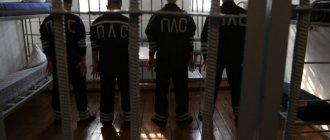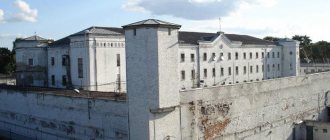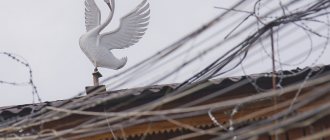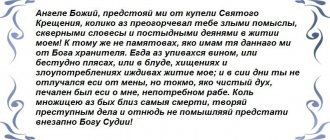Posted by RufflesTheGuineaPig
24 November 2022 16:30
Tags: Butyrka Moscow history prison
3359
20
Actually, it is not only the oldest, but also the most famous. You can study history from its prisoners. Scientists, revolutionaries, saints and inveterate thieves in law sat here.
0
Source:
See all photos in the gallery
Butyrka prison was founded in 1771 and today is one of the oldest in Russia. Butyrki in those days were small villages separated from the city by a field or forest. That is, when Moscow was not yet that huge metropolis, Butyrka was on the outskirts. But now this area (Novoslobodskaya Street) is considered the center of the city.
×
0
Source:
Butyrka Castle was built in the shape of a square. Rectangular buildings with a temple in the center and towers in the corners. Initially, Butyrka was a transit prison - here convicts waited for their transfer. Then it turned into a pre-trial detention center. Now, in addition to those under investigation, those convicted under mild charges are serving sentences here.
0
Source:
The prison is now overcrowded. It holds about 2,000 people with a limit of 1,850. But if you compare it with the nineties, when up to 40 people a year died here from overcrowding and stuffiness, then it’s still possible to live.
Famous inmates
The most famous place in Butyrka is the Pugachev Tower. It is believed that rebel Emelyan Pugachev awaited his execution here. But this is a myth. In fact, he was sitting in the basement of the Mint on Nikolskaya Street. Now there is a museum here. But here sat another famous rebel - Socialist Revolutionary Maria Spiridonova.
0
Source:
She was 21 years old. She worked as a clerk in the provincial noble assembly. And she was also a social revolutionary. On January 16, 1906, on instructions from the party, she mortally wounded the adviser to the Tambov governor G.N. Luzhenovsky. She was brought to Butyrka on May 25, 1906. Here she awaited the death penalty. They said that she asked for a stronger rope, saying that in Russia they don’t know how to hang. However, her execution was replaced with lifelong hard labor. And while she was waiting for the stage, the Pugachev Tower was literally taken by storm - all the “political” people wanted to communicate with the new “star”.
Central forwarding
Butyrka prison, 19th century.
Photo from the site pastvu.com Until 1868, Butyrka was called “The Castle for the Maintenance of the Unluckily Guilty,” and it was used as necessary. But in the end, its status and, accordingly, its functional purpose was determined - the Central Transit Prison.
About 30 thousand “unlucky people,” as they were called in Russia, passed through Butyrka each year. Many stayed here for a long time.
For such people, there were workshops in the castle: carpentry, tailoring, shoemaking, bookbinding, and even wood burning, just like in a pioneer camp during the USSR. Elegant “Viennese” chairs with curved backs and legs were also produced here - for sophisticated society ladies.
And there were always enough poets and songwriters in the castle. Here is one of the collective works of local authors:
Between Butyrskaya and Tverskaya, There are four towers, - In the middle there is a large house, Where there are criss-cross corridors, And people are sitting - all thieves...
The Sergievsko-Elisavetinsky shelter for women and children operated. The fact is that the noble tradition laid down by the legendary Decembrist wives has been embodied in everyday life over the decades.
And for the convenience of women who followed the stage along with their offspring (there were no committees for the protection of children’s rights then), this charitable institution was just opened.
In those days, Spiridonova was called a symbol of Russia
0
Source:
“The prison was terribly overcrowded. The cells that were built for 25 people accommodated 65 and even 100 people,” wrote terrorist Maria Shkolnik, who was imprisoned there during the same months. Another “political” named Yadov spoke about 30-35 cellmates: “We slept on the table, under the table, near the table, right up to the door.” The cleanliness of the floor was checked with a handkerchief; dirt or cigarette butts resulted in a punishment cell. The copper utensils in which food was served had to be cleaned with brick powder until they were shiny—they said that because of this, they lost half their weight in a year. For lunch they gave sour cabbage soup and millet porridge.
0
Source:
The prisoners were flogged and they could even open fire on the line of walkers if someone in it made a sudden movement. During walks, prisoners were forced to take off their hats in the cold and were trained to greet the boss correctly: “We wish you good health, your honor.” Such workouts, which lasted 10-15 minutes, often ended in colds for many. However, the inmates themselves were not against getting sick in order to go to the hospital. And for this they did unthinkable things... “They dried woodlice, ground them into powder, mixed them with dirt, and rubbed all this dirty stuff into a fresh scratch made somewhere on the body,” wrote the revolutionary Yadov. Soon the harsh treatment of prisoners led to a riot. In January 1911, one of the cells, going to work in the workshop, killed four guards and wounded another. As the same Yadov writes, this was not an attempt to escape: “Butyrki” of 1909–1912 was a prison from which one does not escape.” The shooters were hanged, the rest were flogged and deprived of visits, correspondence and tobacco for a long time. But nevertheless, after a while the regime still became easier.
0
Source:
Around the same time, Vladimir Mayakovsky was in Butyrka solitary confinement cell No. 103 for revolutionary activities. Unfortunately, it is not possible to show this camera now - since then the numbering of the cameras has changed many times. Here he read Balmont, who also visited Butyrka 20 years earlier. Lev Nikolayevich Tolstoy also visited here, although on business. He came to prison while working on the novel “Sunday.” Under Soviet rule, one of his daughters will visit here. This is how prison connected eras.
Instruments of torture
In those days, the Butyrka prison was characterized by extremely cruel conditions. In the royal prison there were many weapons for burdening prisoners: stocks, slingshots, handcuffs, chairs, clamps... Prisoners could be chained even for a minor offense. The slingshot was a special metal collar that did not allow the prisoner to lie down. There were three types of chains used in prison; they were placed on the arms, legs and neck. Sometimes criminals were additionally chained to the wall. Chairs were used to prevent escapes. They were made from an oak block weighing up to 25 kg and bound with steel hoops. A collar was attached to the prisoner's neck. The prisoner had to go like this even to the bathhouse and toilet.
Years of repression
Muscovite Ivan Khrenov was the son of an employee of the Tagansk prison; he himself worked there for some time as an accountant. In 1921 he was ordained deacon. In the early 30s he was offered to become an OGPU agent. After the refusal, one of the employees said: “We could use more such persistent people.” In 1937, he was arrested following a denunciation and shot at the Butovo training ground. Tatyana Grimblit was born in Tomsk, at the age of 17 she began working in a children's colony, spending the money she earned on helping prisoners. She was accused of counter-revolutionary activities and went through exile and a camp. In 1937, she was arrested for the fifth time. They were shot at the Butovo training ground. Nikolai Gusev lived in a hut in the Moscow region. He made money by selling mushrooms and berries collected in the forest and donating scrap materials. Local believers considered him “blessed and insightful” and came to him for healing. He didn't live two months before his 18th birthday. They were shot at the Butovo training ground. There are dozens more names of people who are now canonized as martyrs. During the years of repression, they sat in the Butyrka Church. Now its walls are painted with images of prisoners.
0
Source:
Already in 1918, the prison was so overcrowded that a cell for 70 people was built in the laundry room. The area of a standard cell in Butyrka is 54-70 square meters and is designed for 20 prisoners. At the end of the 2nd century, 40-60 people were kept in such cells, and in 1938 their number reached 140. “You didn’t have to lie on your back, there was no room for that. In half an hour or an hour you will wake up from pain in your bones - you will lie down on your side. You try to put a fur coat under your side - there’s nothing to cover yourself with, it’s cold; you get up again, turn around again. But then the neighbor on the right begins to perform the same operation and thereby wakes you up; As soon as you fall asleep, the neighbor on the left starts doing the same thing. And after half an hour you begin to do this whole procedure again from the beginning. What a dream this is!” — wrote the writer Ivanov-Razumnik. The writer Varlam Shalamov, who visited Butyrka twice, wrote that in 1937 the food there was excellent - porridge in the morning, soup with a spoon in it for lunch, and the same dish for breakfast as for breakfast. And the writer Ivanov-Razumnik, who was sitting here at about the same time, wrote that the food had a noticeable taste of soda. You could make purchases in the prison store once every ten days, but with the condition: take at least 200 grams of garlic in your “load”. A fellow prisoner-doctor explained to him that garlic was supposed to protect against scurvy, but at the same time it “stimulates sexual activity,” but soda in large quantities, which was added to food, extinguishes it.
Harry Houdini
It is interesting that in 1908 the famous American illusionist Harry Houdini visited Butyrka. Of course, not as a prisoner. He demonstrated to the astonished prisoners and guards his release from death row, as well as from a special box in which dangerous prisoners were transported to Siberia. The magician was shackled and locked in a box, but he managed to overcome all the obstacles.
Harry Houdini
Such an event was intended as a test of Houdini's abilities. At that time, he actively toured Russia, demonstrating a trick with liberation from a piano with a nailed lid or a closed safe. The illusionist agreed to undergo testing and demonstrated his abilities not only in Butyrka, but also in the Peter and Paul Fortress. The secret of success was simple: the magician knew literally everything about chains and locks. Some could be freed by simply tapping them on a hard surface. Some needed a master key. It would seem: how did Houdini manage to smuggle a master key if he was stripped naked and examined in all places? It's simple: before entering the cell, he certainly kissed his wife “goodbye”, and she passed him a miniature master key in her mouth.
Photo from Varlam Shalamov’s registration card
0
Source:
There are 25 thousand books in the prison library. If you believe Shalamov, then you could find here already confiscated literature everywhere.
0
Source:
During the years of repression, in any prison cell one could meet dozens of brilliant people. The prisoners even lectured each other about what they were experts in. In Ivanov-Razumnik’s cell, an evening of poetry reading “in all the languages of the world” was once held: the composition of the prisoners allowed poetry to be read in both Arabic and Latin.
Makhno
From 1911 to 1917, Nestor Makhno was imprisoned in Butyrka prison. He was released as a political prisoner in 1917 during the February Revolution. Since 1906, Makhno was a member of the association of peasant anarchists and actively participated in terrorist attacks and robberies of the “rich.” In 1908, he was arrested for the murder of a military official. At first he was sentenced to hanging, which was later replaced by indefinite penal servitude. He served his sentence in the convict department of Butyrka. Being semi-literate, he was actively engaged in self-education in his cell: he studied history, literature, and mathematics. He also repeatedly took part in prison protests, for which he often ended up in a punishment cell and eventually earned himself pulmonary tuberculosis.
Sergei Korolev, who launched Gagarin into space, also passed through Butyrka.
0
Source:
Women were also kept in Butyrka. Galina Levinson said: during the dressing period (twice a day for half an hour), women tried to wash at least their underwear. After that, the whole cell, standing on the bunks, waved the panties and dried them. Levinson was imprisoned in Butyrka in the cell of the “wives of traitors to the Motherland” in 1937. Around the same time, director Natalya Sats ended up there for the same reason. Ten years earlier, Levinson studied at the school she directed. Elena Zhukovskaya was also repressed in 1938, following her husband, deputy trade representative in Germany. In “Butyrka” she decided that she was in a cell for the mentally ill: the women’s clothes looked like straitjackets. It turned out that this was men's underwear of a large size: there was no women's underwear. One of Zhukovskaya’s cellmates was the wife of aircraft designer Andrei Tupolev. He himself also sat in Butyrka. Writer Evgenia Ginzburg met four women in wrinkled evening dresses and heels in her cell. I decided that these were “girls of easy virtue.” It turned out that they were members of the party, they were taken right after the theater and were not allowed to transfer for three months.
0
Source:
One day they put the “bath grandfather” - a prison officer who worked in the bathhouse - in Ivanov-Razumnik’s cell. He was arrested for a careless phrase: “this didn’t happen under Lenin.” He was talking about the scars and bruises he saw on the prisoners. For this phrase he received five whole years in the camps. The bathhouse, by the way, was a “post office.” The prisoners chewed the bread, stuck a note into the pulp and left the balls in the dressing room. The person who found the bread ball would unseal it, read the note and, if the addressee was in his cell, then deliver the letter. However, both then and now messages were left on the walls.
Zhanna Aguzarova
In 1984, singer Zhanna Aguzarova came to Butyrka. During that period, Soviet authorities actively persecuted rock musicians. The girl was detained right at the concert. After being held in the Butyrka prison, she is examined at the Serbsky Institute, declared sane, and sent to forced labor for a year and a half at the timber industry enterprise in the Tyumen region.
Zhanna Aguzarova
One of the Butyrka cameras, 1992
0
Source:
Once, when there was nothing to feed the prisoners, the then head of the pre-trial detention center, Gennady Oreshkin, decided to take an unexpected step: he gathered thieves in law in his office. “Are you collecting a common fund? I have not yet seen anything being taken from the common fund to the prison. Let’s unfasten your seat belts and feed the prisoners for a week.” And for a week they fed me dry rations,” Oreshkin said in the documentary “Butyrka.” And in 1994 there was a scandal. At night, several criminal authorities freely entered the territory of the detention center to meet with the arrested thieves in law. The pre-trial detention center staff, who were subsequently tried, helped them get into the isolation ward.
One of the prison cells, 1992
0
Source:
The story of breaking into the pre-trial detention center is not fiction. This incident really happened. However, there is controversy in this story. The current head of Butyrka, Sergei Telyatnikov, claims that the “authorities” came to the pre-trial detention center to again negotiate on food for prisoners. The media reported that a full-fledged thieves' gathering with blackjack and girls took place on the territory of Butyrka. And it was organized by 26-year-old Sergei Lipchansky, known under the nickname Sibiryak. Four years earlier, he became the youngest thief in law. As crime journalist Nikolai Modestov writes, Sibiryak kept two cats in his cell, which he fed chicken on holidays. And they brought him food from the market according to the list. He moved freely around the pre-trial detention center and dressed well there. They say that one employee did not recognize him as a prisoner at all, started talking to him and said that she loved pears. The next day she received a bag of pears. They also say that Lipchansky allegedly even drank with prison employees and at the same time demanded that they turn their jackets inside out so that their shoulder straps would not shine. If any of these tales are true, then it is easy to believe that Sibiryak could have organized a “gathering”. He himself was already free at that time, and came to Butyrka to meet with Shakro the Old, who was then imprisoned, either to agree on something, or to celebrate his birthday. The “gathering” was closed. Sibiryak himself later told journalist Modestov that it was a “cop setup.”
Ivan Kalyaev
For example, it was here that Ivan Kalyaev, who threw a bomb at the Moscow Governor-General, Grand Duke Sergei Alexandrovich, uncle of Nicholas II, was kept. Here he awaited his fate, and during this period he was visited by the widow of the deceased, Grand Duchess Elizabeth Feodorovna. This event has recently been tended to be interpreted as an act of forgiveness on the part of the princess, but many facts speak against this. For example, it is known that the visit to the prisoner was carefully planned, and that Elizabeth previously met with the head of the prison itself. Also, after the meeting, rumors began to actively spread in high society (and not only) that Kalyaev allegedly threw himself on his knees in front of the widow and almost tearfully asked for forgiveness. They wrote about it in the newspapers and talked about it on every corner.
It must be said that Ivan Kalyaev really took pity on the woman who, through his fault, lost her beloved husband. He told the princess that he could have thrown a bomb even when she herself was in the carriage - but he did not do this on purpose, because he did not want unnecessary casualties. Kalyaev was not essentially a murderer; he sincerely believed that he was ridding the world of a “bloodsucker” and an “oppressor.” The young man fought for the idea - and did not repent of what he had done.
Ivan Kalyaev. The photo was taken during the arrest after the terrorist attack.
Having learned about the rumors spread by the princess, the revolutionary wrote her a letter in which he asked her to meet again. But the letter remained unanswered, which leads to the following thought: the meeting was just some kind of PR stunt. Elizaveta Fedorovna was a very smart and at the same time no less ideological person than Kalyaev. And she understood that it was urgently necessary to somehow restore the good name of the reigning family in the eyes of society. A meeting with the convict, widely covered in the press, could have contributed to this - and therefore the princess decided to take such a step. She was sincerely convinced of the correctness and correctness of the actions of the reigning house, believed that another path for Russia would be disastrous... The very meeting of these controversial, but strong-willed people, professing diametrically opposed views, took place not in the Butyrka prison, but in the police station unit on Pyatnitskaya Street in Moscow, where the arrested person was specially taken.
Elizaveta Fedorovna in mourning
By the way, Gestapo cameras were filming in “Butyrka” for “17 Moments of Spring”
0
Source:
Climbing the iron stairs, you can get to the walking courtyard, which is located on the roof. True, it’s hard to call it a courtyard – these are just little rooms with a barred sky instead of a ceiling. In 1992, two defendants escaped from such a courtyard. They were able to lift the grate, climbed out to a nearby furniture factory and exited through its entrance. True, the music did not play for long - they were detained a few days later. But this was the first escape in 90 years. Several escapes were made before the revolution, but nothing is known about them, and in Soviet times, if there were fugitives, they were not reported.
How to get to the architectural monument?
The address of Butyrka prison is known to many residents of the capital. But for city guests such information may be useful. Therefore, it is worth recalling the address of Butyrskaya prison: Moscow, Novoslobodskaya street, 45.
The detention center is located 4 km from the center of the capital. You can get to the architectural monument using the Moscow Metro. You need to go to the Mendeleevskaya station (380 meters from the prison) or Novoslobodskaya station (800 meters).
Women's camera, 1996
0
Source:
In 1996, a woman fled from Butyrka for the first and last time. 26-year-old Natalya Sorokozherdeva studied to become a lawyer in Saratov, but dropped out and moved to Moscow, where she became involved in currency fraud. In the cell, she found herself in the same cell with a girl who was soon to be released and agreed with her on a “replacement”. That is, Sorokozherdeva was released instead of that girl. But three days later she was detained. From the same year, women were no longer kept in Butyrka. Now they can only be seen in the psychiatric ward of the investigative hospital.
0
Source:
The most high-profile escape case was the case of three “lifers” in September 2001. Vladimir Zhelezoglo, Anatoly Kulikov and Boris Bezotechestvo were sentenced for murder. They met in the cell. According to Zhelezoglo, Bezotechestvo was the initiator of the escape. Who worked in a cemetery before going to prison, digging graves. It all started when, during a walk, they found a long wire and, just in case, dragged it into the cell. “We started sharpening this wire on the floor. And suddenly there was a deep groove in the concrete. Fatherlessness jumped in this place, and the floor “burst.” A hole measuring 60 by 60 cm was formed. They lifted the slab, and underneath it was sand. They removed it. Further we see - lime masonry. Plaster, that is. We removed it easily too. Then bricks. And already under them they saw pipes. It was a heating main in the basement,” Vladimir Zhelezoglo said in an interview with the MK newspaper. The plaster was picked with wire, the sand was picked with hands. It was mixed with water and flushed down the toilet. The prisoners managed to do the digging in one night. Then they went underground and found a way out. Two were detained after three weeks, the third hid for about a year and a half. The criminals were “helped” by the dilapidated state of the pre-trial detention center. Now, they say, this is impossible to do. However, the last escape occurred more than 9 years ago. Then a 25-year-old thief from Belarus was able to climb over a 4.5-meter-high wall. And he succeeded only because in freedom he was engaged in mountaineering.










